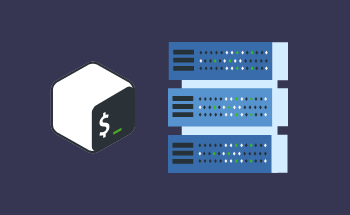Choosing the Right Hyper-converged Solution for Your Business
15:54, 29.03.2024
Business approaches and mechanisms are always changing and improving in order to get the maximum profit. Now the center of all the possible changes is oriented on the technology. To win the battle with competitors in the fast-paced changing environment, businesses need to be even more adaptable and responsive. Here the major pressure lies on the IT departments and that is obvious.
Firms and organizations handle huge volumes of data and a variety of apps simultaneously. That’s why, most businesses choose infrastructure that is simple to set up and make better decisions based on the available information while at the same time staying at the budget rate.
In such an environment, the most beneficial choice is hyper-converged solutions for keeping up with all the possible trends and changes. So, we decided to share our experience in this field and help you with the choice of hyper-converged solutions to cover all the requirements and have quick deployment.
Essence of Hyper-converged Infrastructure
Hyper-converged infrastructure functions as a mixture of networking, computing, and software. This combination is done in one unit with simple management processes and the solution is usually cost-effective. That’s why hyper-converged solutions are ideal for most types of businesses.
Advantages of Employing Hyper-converged Infrastructure
This is a relatively new method that is growing in popularity very quickly due to the major benefits that we will share here. According to statistical data, the market of hyper-converged infrastructure started with 0 and reached $5 billion by 2019. Those figures are rather impressive, so let's discuss the actual advantages for the users:
- Protection of data. With hyper-converged infrastructure, businesses are offered great recovery solutions. For instance, Syneto can restore the data in max 5 min time-frame and clone the virtual machine even faster.
- Software-driven data center. With this type of infrastructure, users can enjoy the flexibility of reaching business needs and getting regular updates for the software without the necessity of changing something in the elements of the hardware or totally changing the hardware.
- Lessened budget. It is possible to reach prices that are less than 2x per virtual machine if compared for instance with public clouds.
- VM-centric. The environment of this solution is connected with VMs so all the management variants are already in the system.
- Centralized approach. All the various elements are in one infrastructure so it is way easier to manage all the resources.
Stages to Deploying Hyper-converged Infrastructure
The mechanism of hyper-converged infrastructure functioning varies from the traditional approach greatly and deployment processes also differ. Right now, there is no universal method of deployment of this type of infrastructure, because everything depends on the used machines. Despite a huge variability in the infrastructure, there are still some general guidelines. So, we decided to share some steps and recommendations that we can give from our practical experience in the field.
Stage 1: Assessing and Defining Workloads
Prior to the choice of any type of infrastructure and hyper-converged in particular, you’d better try to evaluate your company’s IT demands, to simplify this process and get a basic understanding you can start with such questions as:
- What is the actual number of applications that you are using?
- What is your needed RAM capacity?
- What are the major needs that relate to capacity and computing?
- What is the number of network connections?
Just by answering these simple questions, you can make an actual list of requirements and further on it will be much easier to determine the needed infrastructure.
Stage 2: Selecting the Optimal Infrastructure
For choosing the infrastructure, pay attention to the following factors:
- The rate of growth. This criterion is crucial for a better understanding of the business potential. Try to reply to such questions: are you planning any IT changes according to the capacity/computing in the near future? Can quick and unexpected growth of your business drastically influence the IT requirements? In case the answers to these questions are positive then you’d rather consider more scaling solutions. This is potentially beneficial for planning your future budgeting and time investments in the new infrastructure.
- Workload. You should be very precise with determining the workload for choosing the infrastructure. Otherwise, you may overpay for the extra/unneeded resources.
- Additional requirements. You should specify whether your company needs disaster recovery or high-availability clusters. All these criteria can be really important when you are choosing a needed solution. Moreover, you’d better specify your requirements for RPO and RTO.
Stage 3: Strategizing, Implementing, and Testing Hyper-converged Infrastructure
Once you have chosen the needed infrastructure, you can proceed to the following stages:
- Strategizing. The system of functioning with the hyper-converged solution can be radically different from the other variants so it is crucial that the IT department is ready for the proceeding changes. For instance, in case the infrastructure includes both storage and networking, it should be controlled so that responsibilities in the company do not overlap. For a better and simpler process, strategizing with specific plans should be made. Specify and plan every step in detail to achieve the maximum out of the new infrastructure. Also, remember that when using this type of solution, management and hardware may be integrated.
- Implementing. The hyper-converged infrastructure implementation is rather easy with no challenges. Because all the elements are already integrated into one system, you should only do one configuration. Generally, the process of implementation is easy, the only difficulty may be related to the VMs migration. In some cases, this challenge may be skipped because sometimes users may have the same hypervisor for new and old infrastructure. To stop or suspend virtual machines, and also for “live” migration, you can use a helpful tool that is called VMware. With the usage of VMware, you can lessen the downtime greatly with the available options.
- Testing. To check whether the implementation was completed successfully, try to check the system. If you need disaster recovery, then you should set up a plan and test it as well. Check whether the virtualized apps are functioning as needed before sharing resources with the team.
Stage 4: Reaping the Rewards of Your New Hyper-converged Solution
Once you have completed all the above-discussed steps successfully, you can enjoy the new hyper-converged infrastructure with all the benefits that come together with such a solution. Now you have fully protected data, minimal spending, software-defined infrastructure, and a centralized approach towards management.


